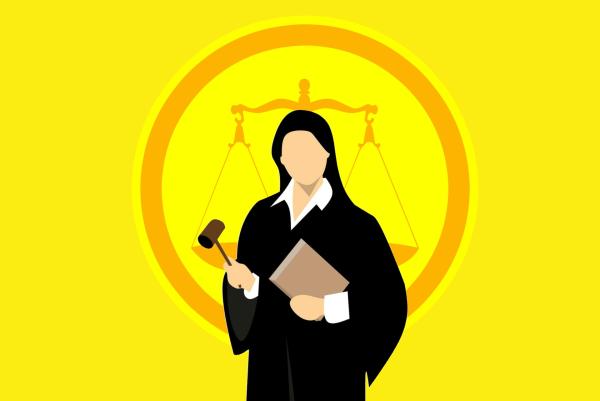- Direct suits by cruise line passengers against the cruise-companies alleging the company endangered passengers' lives through negligence and bad decision-making
- Shareholder derivative suits against cruise lines for failure to disclose potential adverse events of a financial nature (e.g., lawsuits)
- Worker's compensation suits for employees injured on the job when exposed to ill co-workers
- Claims by their sickened spouses for "bystander exposure."
COVID-19 and Cruise Lines
Dozens of suits have now been brought against cruise lines. According to Martin Davies, director of the Tulane Maritime Law Center at Tulane University Law School. "These claims are enormous – nothing the industry's seen before with so many passengers fallen sick and bringing suit." Undoubtedly, the litigation will have a devastating effect on the cruise lines, if only in legal fees. It's not for nothing that the maritime industry has imposed a thick bulwark of legal hurdles for plaintiffs to overcome.
The industry is responding by defending their sterilization and cleaning processes. Proving that cleaning was improperly performed, resulting in exposure to COVID-19 (an essential element of causation of the plaintiffs' injuries), may be challenging to achieve. But even if exposure can be proven, the plaintiff must also prove the defendant acted carelessly or negligently. And most likely, the ships did excellent jobs in cleaning and sterilizing.
But consider the decision to quarantine on board and the failure to immediately alert existing or new passengers that their co-travelers were sick – allowing passengers on board to disembark if they wish, or new passengers not to embark if they hadn't already. This seems to me far more problematic to defend. The novelty of the scenario may protect defendants, as their ability to foresee harm in these novel circumstances hasn't been established, nor has it been determined what a reasonable person would do. Other legal experts aren't optimistic the passengers will prevail, either.
Lawsuits are not merely to compensate ill or injured claimants, but also to deter negligent behavior and encourage prudence. Watching the Japanese cruise ship (labeled by one medical commentator as a floating petri dish) bobbing and weaving on the waves, resulting in 700 sick passengers (one-third of those aboard) and 13 deaths – should have put similar cruise ships on notice that quarantine in a closed vessel was probably the worst thing that could have been done under the circumstances. It also highlights the poverty of adequate epidemiologic response by public health agencies that didn't recommend removing ill passengers or provide alternatives for ports that refused to accept them.
Consider another theory: Isolating passengers in narrow, cramped quarters may prevent person-to-person transmission. But these passengers shared two additional transmission vectors: the air handling system and the steward delivery system (of meals, for example). Both vectors can track the virus from room-to-room, or person-to-room, as I have previously written [1] concerning smallpox epidemics. Indeed, tracking microbes or other detritus on shoes and clothes is a well-recognized means of microbial spread. Cat allergen has been detected in the Antarctic, even though cats have never been there, likely tracked on explorers' shoes. In the 2001 Anthrax event, the microbe "spread throughout the entire [AMI] building … tracked on people's shoes and clothes,"
This hypothesis shouldn't be difficult to prove. And if it can be, the cruise operators might have a hard job defending their decision to keep passengers on board, and in the dark, the failures of governmental agencies to so advise, notwithstanding. The legal key is the foreseeability of harm, and after the Japanese Princess and the US Theodore Roosevelt incidents, heightened contagion and infection shouldn't have been hard to foresee. This exposure mechanism provides not only a scientific explanation for transmission for hitherto unexplainable spread but could provide a legal means for cementing multi-jurisdictional litigation, making the job of plaintiff's attorneys and recovery easier and quicker.
COVID-19 and the workplace
The worker's compensation suits have the most straightforward chance of prevailing, as proof of employer negligence is unnecessary, nor is freedom from contributory negligence on the worker's part. But recovery is limited to actual out-of-pocket costs; pain and suffering awards are excluded. Attorney fees are also reduced, perhaps reducing the financial motivation of these cases.
There have already been two cases where the husband was allegedly sickened on the job and infected his wife. [2] This kind of "second-hand" exposure case, to be sure, will invite push-back, with the employers likely claiming they had no duty to safeguard the health of spouses. The lawsuit genre gets its roots from the asbestos litigation, and here it was enormously successful, generating multi-million-dollar awards to spouses exposed to asbestos dust when washing their husbands' clothes. [3] The precedent makes it more likely that the COVID-19 claimants will prevail as well.
The asbestos industry was able to circumvent massive financial damage in these suits by limiting bystander exposure to spouses – the most likely family member to come in contact with their clothes. But the COVID-19 situation is different. Here we can envision exposure not just to spouses, but to children or close relatives. The financial impact, therefore, increases, perhaps not exponentially, but certainly significantly.
That their husbands might have been contributorily negligent by failing to wear their masks at work won't shield the employer from liability – as it was the employer's responsibility to assure safety at the workplace. The plaintiff also may claim that the employer's negligence lay in not enforcing social distancing requirements or failure to sterilize or provide masks and gloves. The employer will argue that the husband was sickened -not because of its negligence- but because he contracted the disease elsewhere.
So what if the husband had concurrent exposure in the workplace as well as his favorite bar? Or what if he were exposed earlier, someplace else? Here again, proving causation is essential to prevail, the first step involving establishing exposure to the toxic culprit. [4]
Resolving those tricky issues is why good lawyers get rich.
[1] Weapons of Mass Hysteria, Faulty Biothreat Predictions, and Their Impact on National (In)Security: A Case-Study of Smallpox Health Matrix: The Journal of Law-Medicine
[2] Are businesses liable to ill family members of workers who contract COVID-19 American Bar Association Journal
[3] Jury awards $7 million in case involving wife getting exposed to asbestos in her husband's work clothes. Torts Blog
[4] The Causal Conundrum: Examining the Medical-Legal Disconnect in Toxic Tort Cases From a Cultural Perspective, Creighton Law Review




